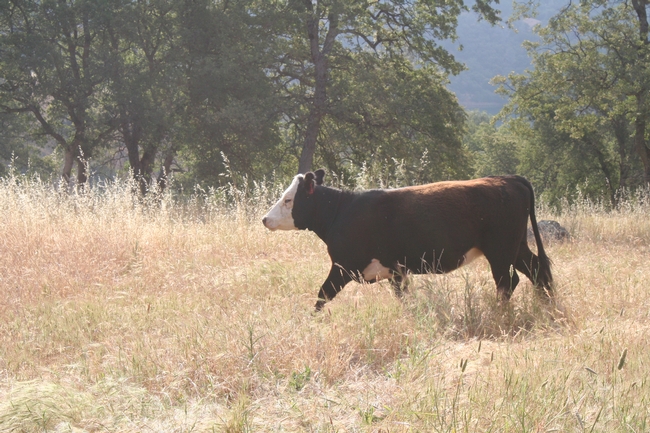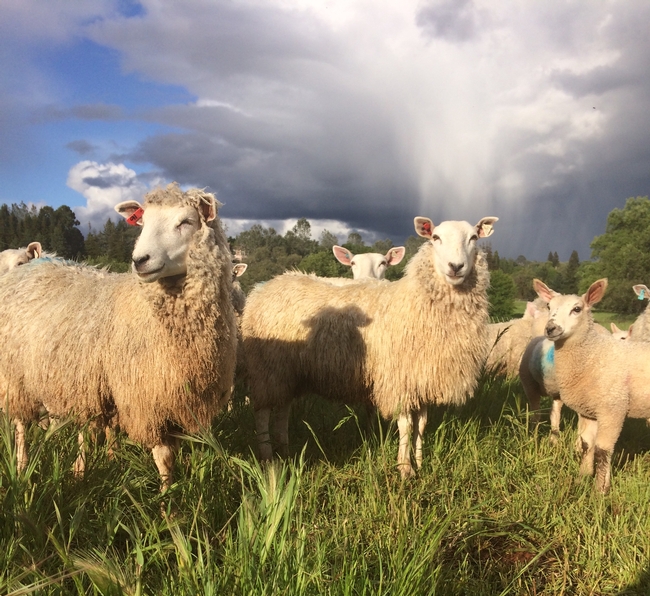Every spring, there comes a stretch of time when I wish we had 10 times as many sheep. Since we're stocked at a level where we're comfortable we'll have enough grass in bad years (and in the autumn months - see my December 2018 post, Fall Feed... or Fuel Load?), we almost always have more grass than grazers in April and May. We simply can't keep up with forage growth during the spring flush.
Grazing, obviously, can be a tremendous tool for managing fuel load (especially "fine" fuels, like grass and broadleaf plants) in our Mediterranean climate. Unlike mowing or mechanical fuel reduction tools, or herbicide treatment, grazing actually removes flammable material - ruminant animals like sheep, goats and cattle convert this "fuel" into muscle, fat, bone, and fiber. Grazing livestock can access areas where it would be next to impossible to operate equipment. And areas that have been grazed don't burn with as much intensity as areas that haven't.
Despite these benefits, every spring I am reminded that we simply don't have enough livestock in California to address all of our wildfire fuel problems. Targeted grazing contractors have developed successful business models focused on bringing grazing animals to the fuel load - working with utilities, homeowners associations (HOAs), and municipalities to manage fuels near infrastructure, residences, and communities. Yet even within these more focused operations, I believe we'd benefit from greater coordination between grazing contractors, rangeland managers, and fire planners. Let me explain using an example from my own spring/summer grazing operations.
We no longer operate a paid targeted grazing business, but we do trade winter grazing for summer fuel load reduction with a community near Auburn - in other words, we graze our sheep in the community during winter and early spring for free, in exchange for reducing fuel load in the late spring and summer. So far, this arrangement has worked well for us as well as for the HOA. We do a great deal of grazing planning during our lambing season (mostly to ensure that we've got enough forage and natural shelter for the ewes and lambs); more recently, we've also started to be more intentional about our summer grazing plans.
The fuels in this community are mostly annual grasses and broadleaf plants, with some coyote bush, poison oak, and Himalayan blackberry interspersed with blue oaks, interior live oaks, and foothill pines. The homesites are located on a series of parallel ridges and drainages that fall off to the northwest, and the community is adjacent to a large regional park. In thinking about our summer efforts to make this community more fire safe, we've chosen to remove fuels from a strip on either side of the roads and driveways serving the homes. We've also grazed around the structures that are situated on ridge tops. We've realized that our grazing wouldn't necessarily be a fuel break (in the sense of removing all vegetation down to mineral soil); our grazing, rather, would hopefully slow a fire enough to give fire fighters a chance to protect structures and lives.
As we've thought about this, however, I've realized that I would benefit from a better understanding of fire behavior in our particular environment. Where are the ignition sources likely to be? My sense is that southerly Delta breezes in the summertime are usually associated with lower temperatures and higher humidity (and less extreme fire behavior). North and northeast winds, on the other hand, tend to be hot and dry - does this suggest that we should focus our grazing on removing fuels north and east of the community. These kinds questions, I think, are where ranchers, rangeland managers, and fire planners could greatly benefit one another's understanding of these interactions. Since we can't possibly have enough grazing animals to address ALL of our fuel-load issues, we need to be more strategic about prioritizing grazing activities that are focused on fuel-load reduction. These kinds of collaborative efforts, I think, are an important piece of reducing the threat of wildfire in our foothill communities.
